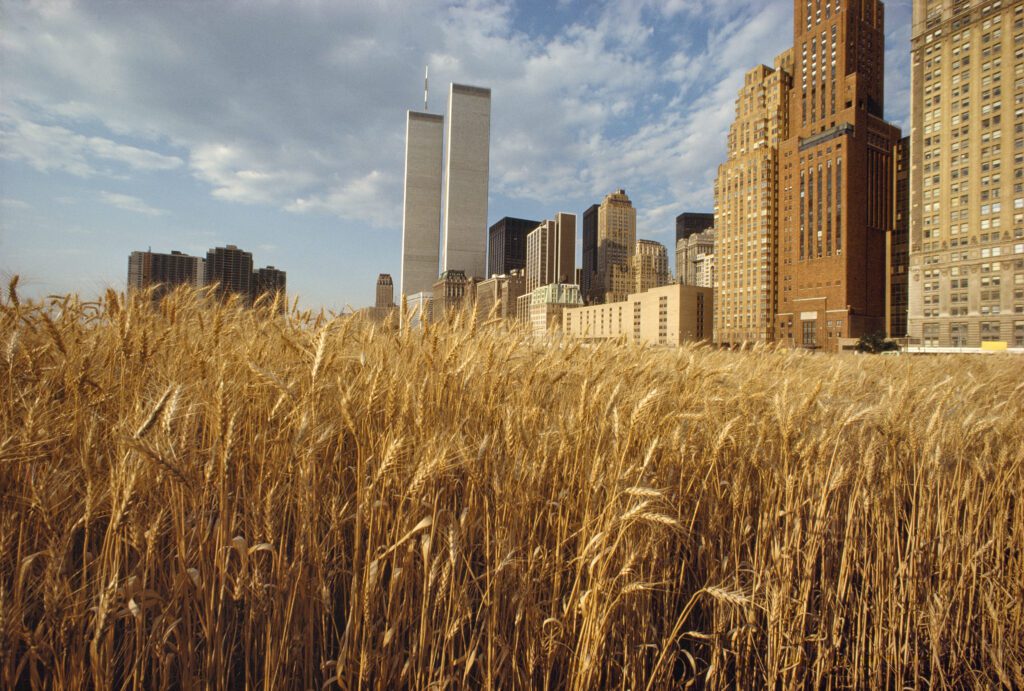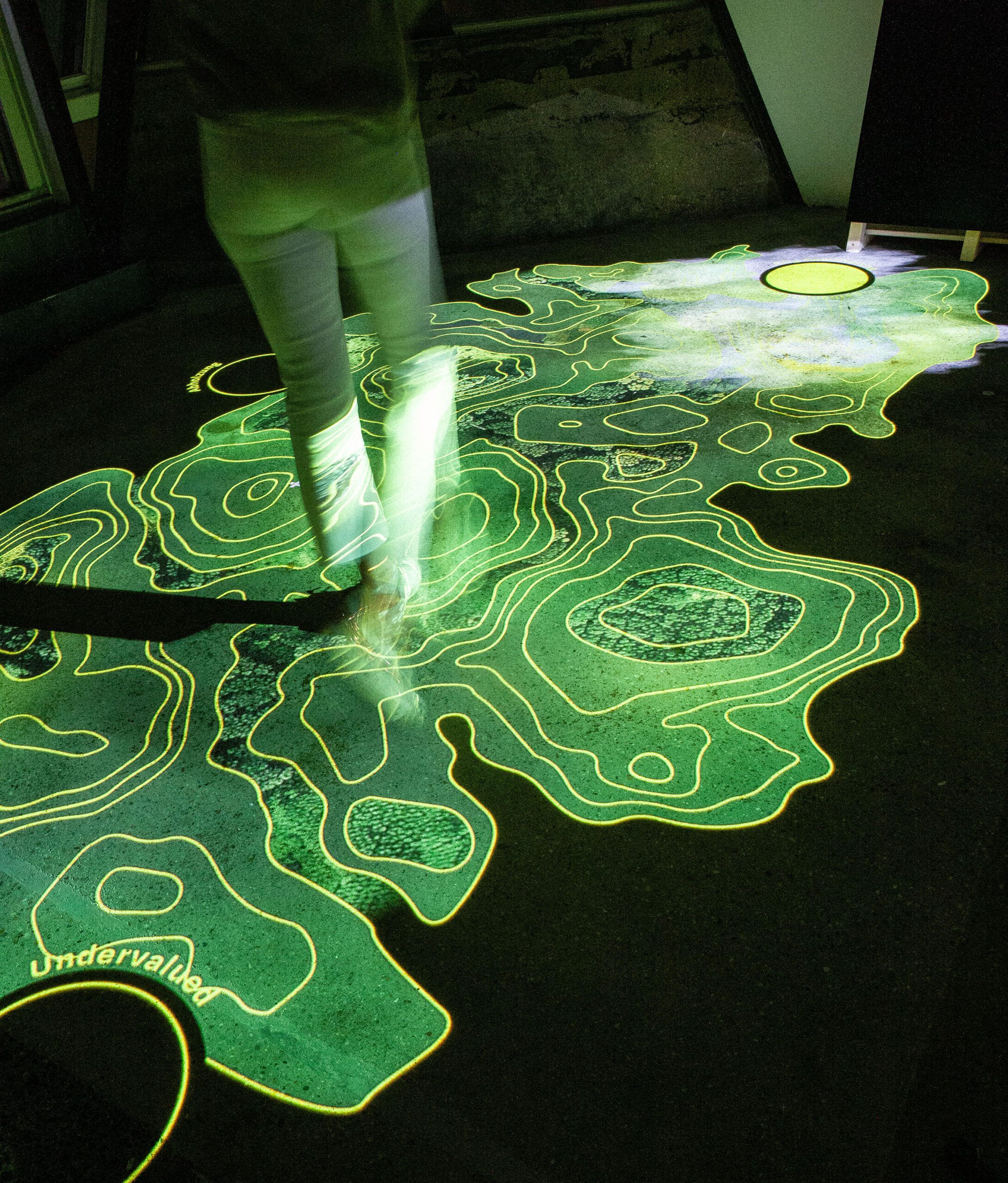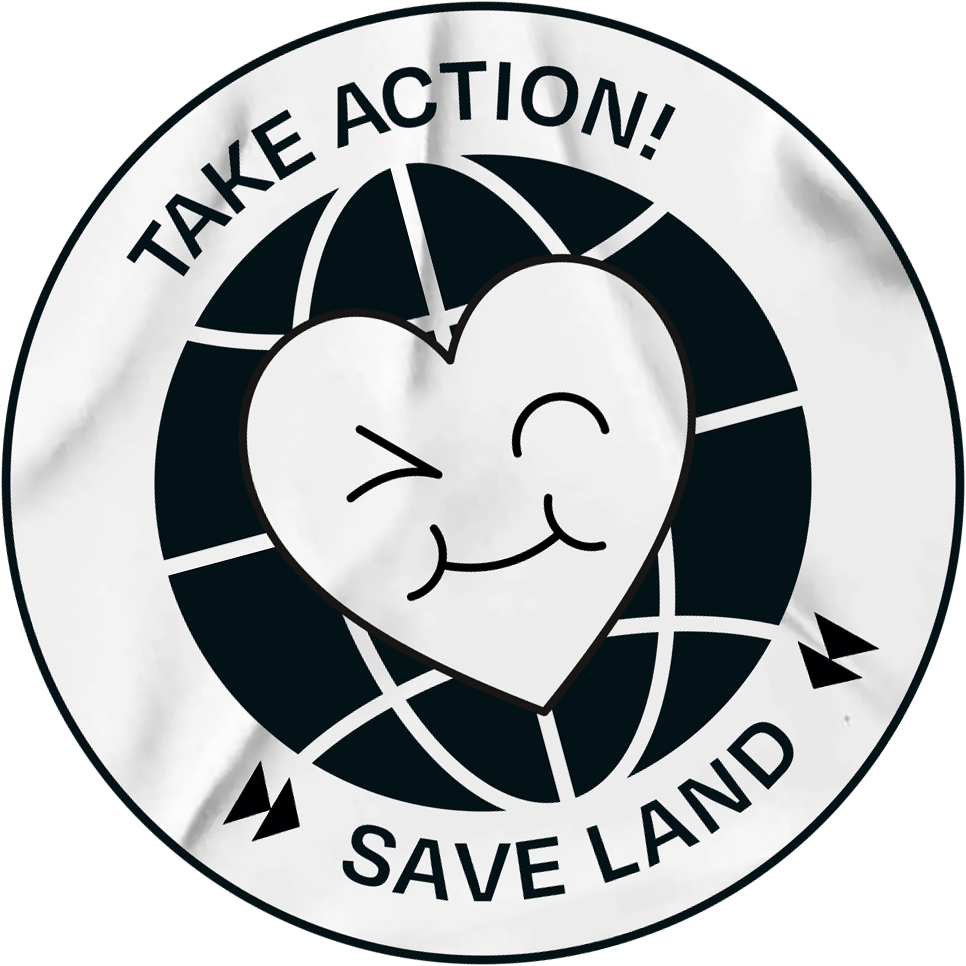Save Land
United for Land
An exhibition by the Bundeskunsthalle and the UNCCD-G20 Global Land Initiative on the occasion of the 30th anniversary of the UNCCD

Save Land. United for Land
6 December 2024 – 1 June 2025 in Bonn
Only 29 percent of Earth’s surface is not covered by water. This is our habitat: the land areas of our planet. Our soils take up to hundreds of years to form. But one extreme event is enough to destroy them in a matter of minutes. Up to 40 percent of the world’s soils are already considered degraded, particularly due to human overexploitation. Preserving our soils is of the utmost urgency not only for ourselves, but also for biodiversity and the global climate. Land is a treasure of existential value that must be preserved.
This exhibition combines important positions in contemporary art with exhibits from cultural history and the natural sciences and uses the latest media technologies to understand the global situation of land. What is the state of soils in cities and on rural land used for agriculture and industry? And is there any nature left in the world untouched by humans? What can we do to protect land? The exhibition aims to inspire action for the common good.
G20 Global Land Initiative
Land is the foundation of human existence. This exhibition celebrates the connection between land and life. It joins the voices of art, culture and science to spark awareness and action to reduce degraded land. Co-sponsored by the G20 Global Land Initiative (GLI) at UNCCD and Bundeskunsthalle, the exhibition calls on us to save land and shows us how to halt and reverse land degradation. The G20 Global Land Initiative was established in 2020 by the Group of Twenty (G20) which now also includes the African Union. Under the supervision of the UNCCD, the aim is to reduce degraded land by 50 percent by 2040. Be the changemaker! Pledge and take action before you exit the exhibition!
30 Years of UNCCD
For 30 years, the United Nations Convention to Combat Desertification (UNCCD) has brought nations together to protect and restore land. Every year, the world loses 100 million hectares of productive land – an area nearly three times the size of Germany – threatening the livelihoods of more than 3 billion people. This exhibition not only marks a milestone in the global effort, but also serves as an urgent invitation to individuals and communities to join us in securing healthy, productive land for future generations.

© dform, Vienna
Land is Life
What does the word ‘land’ mean? Land is the ground that is not covered by water. Land is the platform that connects all living and non-living things on planet Earth. But land also has other meanings: Land is property, land is culture, land is a feeling – we are bound to the ground by gravity. Land appears in all imaginable forms and can be of enchanting or terrifying beauty.
Without fertile soils, the existence of humanity and countless other living beings is threatened. Worldwide, two out of five people are affected by degraded land. This is accompanied by natural disasters, food and water insecurity as well as social and economic instability. To better understand land in its complex significance for our lives and to achieve a faster restoration of degraded soils worldwide, we need to consider different perspectives. We need knowledge from the natural sciences as well as from cultural history, sociology and political economy. And above all, we need Indigenous, local knowledge to protect our soils. We do not yet have a ‘planet B’ in sight.




Interactive Globe
Explore the world interactively and familiarise yourself with the situation of the global land areas! In the exhibition in Bonn, this interactive globe can be experienced as an exhibit in full size. Try it out - digitally here or live at the Bundeskunsthalle in Bonn.

Cities – The Material World
Today, the world’s population is 8.1 billion and it is still growing. More than half of all people live on just 2 percent of Earth’s land surface: in cities. By 2050, more than two thirds of us will live in cities.
As ecosystems, cities are characterised by heavy building development, sealed soils, dense traffic and high levels of human disturbance of nature. Cities consume immense amounts of energy and raw materials. Their constant growth leads to increasing consumption, but also to an increasing waste of resources. The complex supply systems of large cities are accompanied by gigantic amounts of waste and pollution. Sealed soils lose their ability to bind carbon, regulate water availability and serve as a healthy habitat for a variety of organisms. Cities are places where not only many people come together, but also the great challenges of our time: climate protection, adaptation to climate change, maintaining and creating healthy living conditions, social justice and loss of biodiversity.
What can we do? Cities need a green infrastructure that simultaneously contributes to human well-being and biodiversity.




Rural Land – The Big Harvest
Humans have been farming and rearing livestock for thousands of years, but since the 1960s, the way we treat the land and the animals in our care has changed radically. Today, immense areas of land are required for the mass cultivation of food. More than half of this land is used for feed production in livestock farming and only 39 percent for the cultivation of plant-based foods that we eat ourselves. However, animal products provide only 18 percent and plant products an impressive 82 percent of the calories consumed worldwide.
Modern agriculture with its monocultures and use of chemicals means that we are using up the soil. Globally, food production is responsible for 80 percent of deforestation, 70 percent of freshwater consumption and 29 percent of greenhouse gas emissions. It is the main cause of biodiversity loss. Added to this is land degradation due to mining.
What can we do? Agricultural production must no longer be measured solely in terms of yield per hectare, but must include the following values: nutritional value as well as the costs and benefits for the environment and society.






Natural Habitats – Nature’s Core
Only 23 percent of the planet’s habitable surface can still be categorised as nearly untouched nature. Most of this land is located in just 5 countries: Canada, Alaska, Brazil, Botswana and Australia. We know little about these areas and tend to romanticise or forget them. In any case, we do not attach sufficient value to them.
The loss of biodiversity has been progressing dramatically worldwide for many years. Nature is becoming increasingly depleted. Permanently unused areas in which ecosystems can develop naturally without direct human influence have become rare worldwide. This also jeopardises and destroys our own livelihoods.
What can we do? One of the most effective measures to halt climate change and biodiversity loss is to stop deforestation. This is because forests make a significant contribution to carbon storage and preserving biodiversity.




Take Action
For land restoration to succeed worldwide, governments, companies, and individuals must work together to stop the negative trend. Healthier soils bring many benefits, such as local food, sufficient clean water, a more stable economy and more secure livelihoods.
But what does ‘take action’ mean? How should we engage in the restoration of degraded land and make our lives more land-friendly? There are several step-by-step approaches:
- Raise your awareness of the issue and inform yourself.
- Talk to others about the issue and share your experiences.
- Stand up for the issue, for example by taking part in campaigns.
- Change your behaviour and attitudes in everyday life.
- Become active in the restoration of degraded soils.
In the exhibition we present several projects and stories. They include ideas that we can all implement as first steps, but also inspirations on what a more land-friendly life could look like in the future.


Sticker-Generator
How would you like to commit to the land? Generate your commitment sticker now and share it with the world. Use the following hashtags: #SaveLand, #United4Land, #LandisLife, #GenerationRestoration, #UNCCD, #G20GLI































Love Letters to Land
Submit your own love letter to land now! Your contribution will be displayed both online and on-site at the exhibition in the Bundeskunsthalle in Bonn.